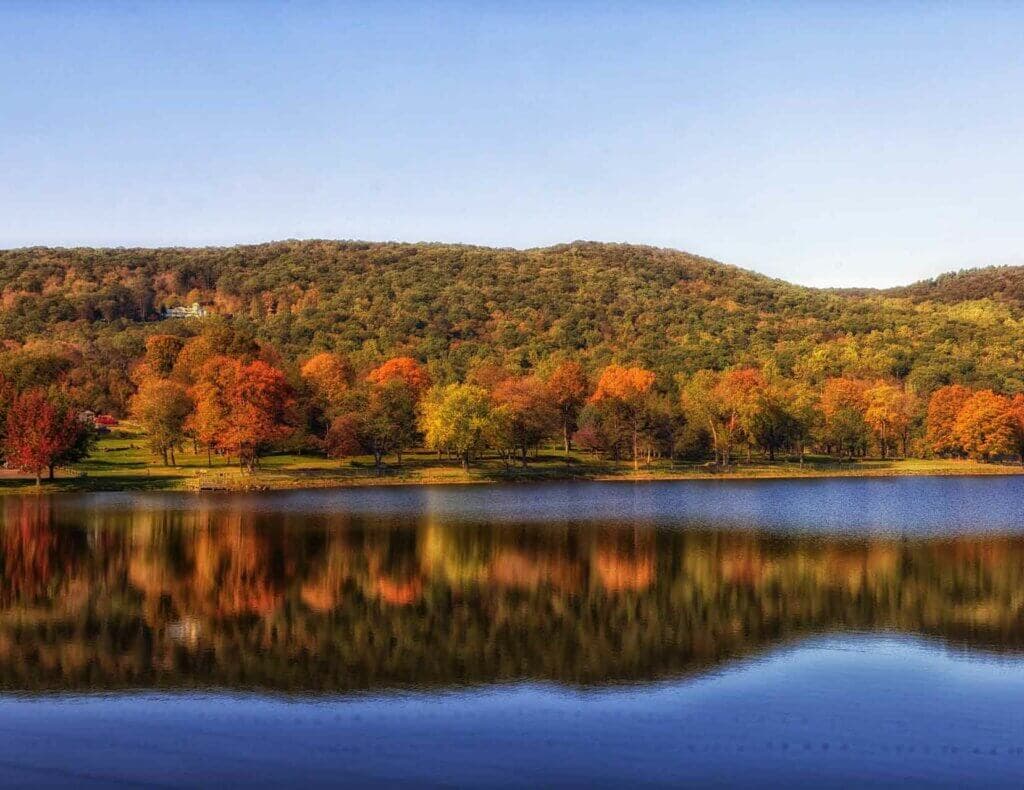
Connecticut, a state celebrated for its historical charm and cultural diversity, is also a canvas of evolving urban landscapes. Beyond the quaint towns and picturesque landscapes lies a dynamic tapestry of cities, each telling a unique story of population growth and development.
In this exploration, we peel back the layers to reveal the intriguing narratives behind the rise in population in Connecticut’s top cities, showcasing how they’ve transformed into bustling hubs of vitality.
Bridgeport: Navigating the Economic Surge
Bridgeport, Connecticut’s largest city by population, is not just a statistical standout but a thriving urban center that has undergone a remarkable economic surge. Over the last five years, Bridgeport has experienced a population growth of over 5%, indicative of the city’s newfound appeal.
This surge can be attributed to strategic economic revitalization efforts that have transformed the city into a hub of opportunity.
Bridgeport’s economic revitalization is evident in the redevelopment of its waterfront, attracting businesses and residents alike. The Bridgeport Innovation Center, a dynamic space for startups, encapsulates the city’s commitment to fostering entrepreneurship.
The conversion of vacant industrial spaces into modern apartments showcases Bridgeport’s adaptive reuse initiatives, creating a synergy between economic growth and residential development.
New Haven: Academic Hub and Population Magnet
New Haven, home to Yale University, is not just an academic powerhouse; it’s a city that magnetizes residents seeking knowledge-based opportunities. With a population growth rate exceeding 6% in the last five years, New Haven’s allure goes beyond its prestigious university, encompassing a vibrant blend of culture, innovation, and community spirit.
New Haven’s population growth is also fueled by community engagement initiatives. Local markets, such as the CitySeed Farmers Market, foster a sense of community and sustainable living. The city’s commitment to accessible green spaces, like East Rock Park, further enhances its residential appeal.
Hartford: Capitalizing on Cultural Heritage
Connecticut’s capital, Hartford, isn’t just a bureaucratic hub; it’s a cultural epicenter witnessing a surge in population. The preservation of its historical landmarks, coupled with an expanding arts and entertainment scene, has turned Hartford into a magnet for those seeking a balance between tradition and modernity.

The population growth in Hartford mirrors the city’s commitment to cultivating a vibrant and culturally enriched urban environment, with a notable increase of 4% in the last five years.
Stamford: Corporate Success and Urban Appeal
Stamford, with its soaring skyline, isn’t just a corporate landscape; it’s a city witnessing exponential population growth driven by economic prosperity. As businesses flourish, Stamford becomes a haven for professionals seeking career advancements.
The city’s focus on blending commercial success with recreational amenities attracts a diverse population, shaping it into a dynamic urban oasis. Stamford boasts a remarkable population growth rate of 7% in the last five years.
Waterbury: Renaissance of Industry and Population
Waterbury, historically known for its industrial prowess, is experiencing a renaissance. The city’s commitment to revitalizing its manufacturing sector has not only boosted the economy but also attracted a wave of new residents.
As old factories transform into cultural spaces and economic hubs, Waterbury’s population surge is a testament to its ability to reinvent itself while honoring its industrial heritage. The city has witnessed a significant population growth of 3.5% in the last five years.
Norwalk: Coastal Charms and Multicultural Growth
Norwalk, nestled along the coast, isn’t just a picturesque waterfront; it’s a city embracing both its maritime allure and cultural diversity. As the population swells, Norwalk’s commitment to preserving its coastal ecosystem and fostering a multicultural community is evident.
The city’s strategic urban planning strikes a balance between economic growth and environmental preservation, creating a city that resonates with both residents and nature. Norwalk boasts an impressive population growth rate of 5.5% in the last five years.
Norwich: Revitalizing History with Contemporary Energy
Norwich, a city with a rich historical legacy, is experiencing a renaissance that blends the old with the new. With a population growth rate of 4% in the last five years, Norwich is embracing economic revitalization while preserving its historical charm.
The city’s commitment to adaptive reuse projects, such as the repurposing of historic mills into mixed-use spaces, reflects a forward-looking approach that attracts a diverse array of residents.
Manchester: Commerce and Community in Concert
Manchester, known for its vibrant commerce and community spirit, stands as a testament to balanced urban development. Boasting a population growth rate of 3.8% in the last five years, Manchester thrives as a commercial hub with its shopping centers and business districts.

Simultaneously, the city fosters a strong sense of community, evident in its local events and initiatives that bring residents together.
Bristol: Industrial Heritage meets Modern Resilience
Bristol, anchored in industrial heritage, is navigating the complexities of modern urban life with resilience. A population growth rate of 3.5% in the last five years indicates the city’s ability to adapt.
Bristol’s commitment to preserving its industrial roots, like the American Clock and Watch Museum, showcases a balance between honoring the past and embracing a dynamic future.
New London: Coastal Elegance and Cultural Diversity
New London, nestled along the coast, weaves a tale of coastal elegance and cultural diversity. With a population growth rate of 4.2% in the last five years, the city is emerging as a cultural hotspot. From its historic waterfront district to a thriving arts scene, New London’s appeal goes beyond its picturesque location, making it a magnet for those seeking a blend of coastal living and cultural richness.
Discover actual population in 2024 and more in this review
Milford: Coastal Gem and Residential Retreat
Milford, a coastal gem, offers a residential retreat with a population growth rate of 3.7% in the last five years. The city’s commitment to preserving its scenic coastline while providing a high quality of life for residents is evident. Milford Harbor, lined with charming shops and eateries, reflects the city’s dedication to balancing economic vibrancy with the preservation of its natural beauty.
Shelton: Industrial Innovation and Suburban Appeal
Shelton, known for its industrial innovation, is evolving into a suburban destination with a population growth rate of 3.2% in the last five years. The city’s strategic location, nestled between New Haven and Bridgeport, positions it as an attractive residential option.
Shelton’s industrial parks coexist with residential neighborhoods, creating a unique urban dynamic that appeals to those seeking a blend of career opportunities and suburban tranquility.
Stratford: Waterfront Living and Economic Renewal
Stratford, with its waterfront allure, is undergoing economic renewal with a population growth rate of 3.8% in the last five years. The city’s proximity to Long Island Sound and its commitment to revitalizing its downtown area make it an appealing destination. Stratford’s blend of waterfront living, economic opportunities, and cultural events positions it as a dynamic player in Connecticut’s evolving urban landscape.
Middletown: Cultural Hub and Educational Nexus
Middletown, positioned as a cultural hub and educational nexus, is experiencing a population growth rate of 4.5% in the last five years.
Home to Wesleyan University, the city attracts both students and residents seeking a vibrant intellectual and cultural environment. Middletown’s historic Main Street, dotted with shops and eateries, reflects a city that harmoniously blends academia, culture, and community.
West Hartford: Suburban Allure Amid Urban Expansion
West Hartford, with its suburban charm, is not just an escape from city life; it’s a city in its own right, witnessing a rise in population. The allure lies in its residential appeal, where tree-lined streets and vibrant town centers create a welcoming environment.
With a population growth rate exceeding 3.5% in the last five years, West Hartford has become a sought-after destination for those seeking a blend of urban amenities and suburban tranquility.
Meriden: Blending Heritage with Modern Community Spirit
Meriden, Connecticut’s tenth-largest city, boasts historic architecture that adds character to its urban landscape. Notable structures like the Curtis Memorial Library and the Meriden City Hall reflect the city’s commitment to preserving its architectural heritage.

Meriden becomes a living museum, where residents and visitors can explore the aesthetic delights of the past. The city has witnessed a steady population growth of 2.5% in the last five years.
Conclusion
Connecticut’s urban narrative extends far beyond the initial ten cities explored. Each city, with its unique blend of history, economic resilience, and cultural vibrancy, contributes to the state’s multifaceted urban mosaic.
As Connecticut continues to evolve, these cities stand as beacons of growth, diversity, and innovation.
Whether it’s the industrial renewal in Bristol, the coastal elegance of New London, or the cultural dynamism of Middletown, Connecticut’s cities continue to shape the state’s identity, offering residents and visitors alike a glimpse into the rich tapestry of urban life in the Constitution State.
Last modified: February 28, 2024

